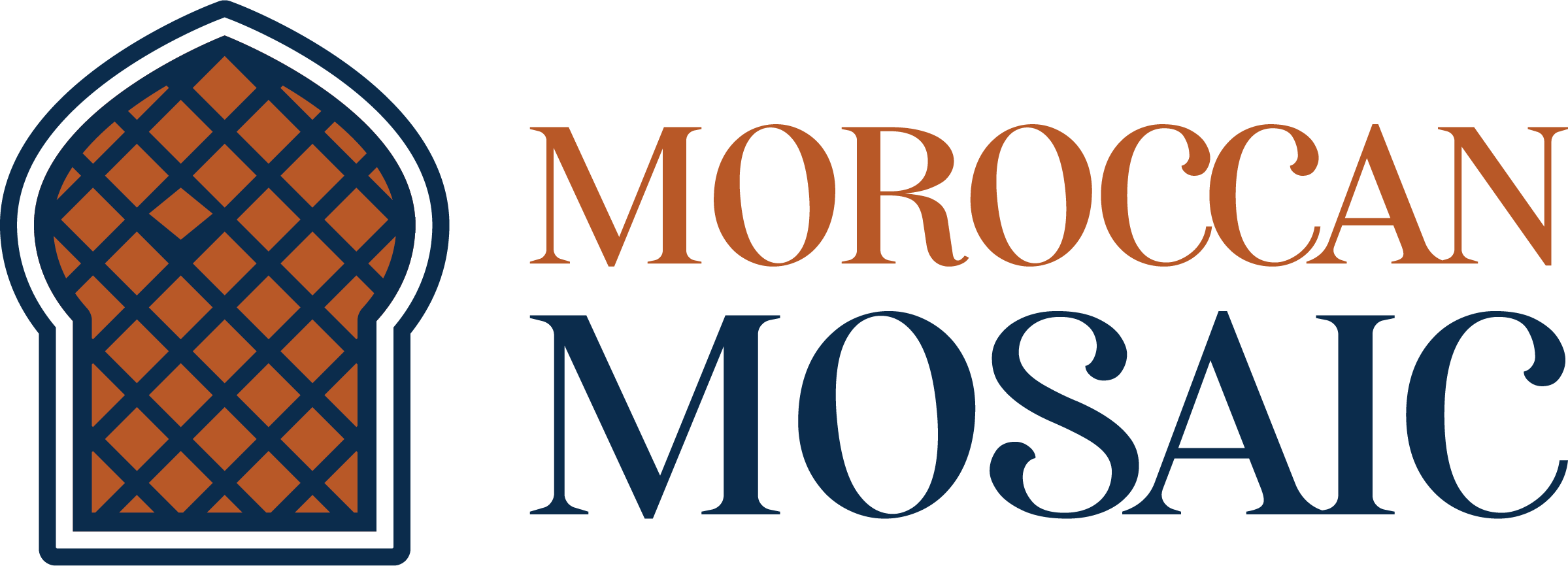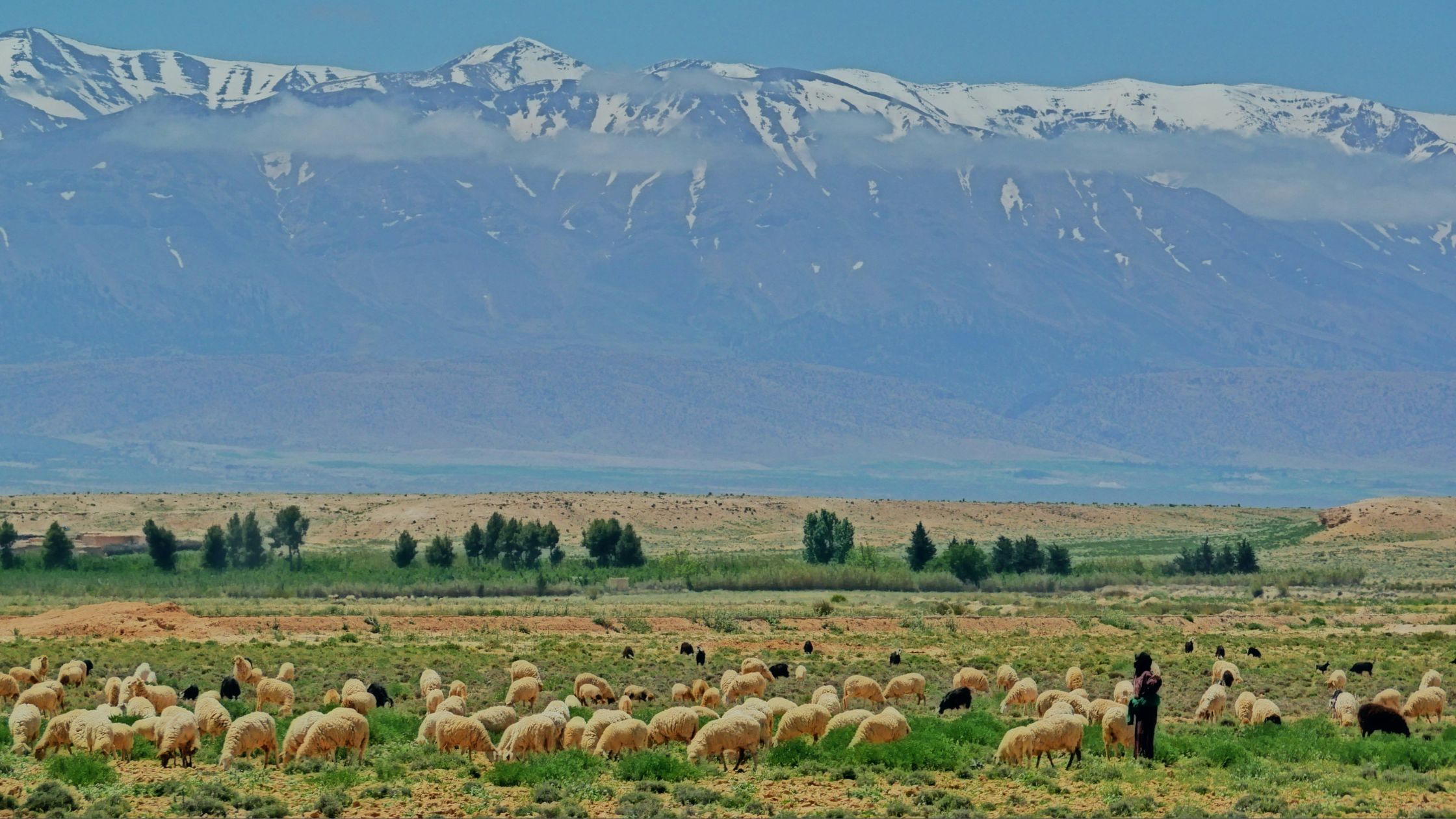Wool processing is the complex series of steps involved in transforming raw wool from sheep fleece into yarn, fabric, and ultimately finished products. The process is carefully designed to preserve the natural properties of wool while ensuring consistent quality and performance. At Moroccan Mosaic, we try to preserve the traditions from wool processing to getting a final product.
Wool processing has a long and rich history in Morocco, dating back to ancient times. The country is home to a variety of sheep breeds, each with its own unique characteristics and fiber quality. These sheep provide the raw material for a thriving wool industry that produces a wide range of products, including carpets, rugs, Pillows, clothing, and blankets.
According to the International Wool Textile Organization, all types of wool can be used for different purposes. Very fine wool is primarily used for clothing while coarser wool is used in carpets and furnishings such as curtains or bedding.
Traditional Wool Processing Methods
Traditionally, wool processing in Morocco has been a labor-intensive process, often carried out in small artisanal workshops. The process begins with shearing sheep, which is typically done by hand. The fleece is then sorted and cleaned, often using natural methods such as washing with plant-based detergents.
Carding and combing are essential steps in preparing the wool for spinning. These processes align and straighten the fibers, making them easier to spin into yarn. Spinning is traditionally done by hand on a spinning wheel, but more recently, mechanical spinning machines have been introduced.
After spinning, the yarn is dyed using natural dyes derived from plants, insects, and minerals. These dyes produce vibrant colors that are known for their durability and resistance to fading. The dyed yarn is then woven into fabrics, either on handlooms or traditional Moroccan looms.
Modernization of the Industry
In recent years, the Moroccan wool industry has undergone a process of modernization, with the introduction of new technologies and machinery. This has helped to improve efficiency and productivity, but it has also led to some changes in the traditional methods of wool processing.
Some artisanal workshops have closed down as they have been unable to compete with the larger, more mechanized factories. However, there is also a growing demand for handmade wool products, which has helped to sustain traditional weaving and embroidery techniques.
Here are some of the key characteristics of wool processing in Morocco:
- Focus on traditional methods: There is a strong emphasis on preserving traditional Moroccan weaving and embroidery techniques.
- Use of natural dyes: Natural dyes are still widely used to produce vibrant and durable colors.
- Sustainability: The industry is increasingly focused on sustainable practices, such as using organic wool and avoiding harmful chemicals.
- Export potential: Morocco is exporting more and more wool products to international markets.
Key Benefits of Wool Textile:
-
Durability: Wool is a naturally durable fiber that can withstand heavy foot traffic and regular wear and tear. It is also resistant to stains and fading, so you can enjoy your wool rug for years to come.
-
Warmth: Wool is an excellent insulator, so it will keep your feet warm in the winter and cool in the summer. This makes it a great choice for areas of the home that get a lot of traffic, such as living rooms and hallways.
-
Naturally flame retardant: Wool is inherently flame-resistant, making it a safe choice for homes with children or pets. This is because wool fibers naturally burn slowly and will not easily ignite or spread flames.
-
Hypoallergenic: Wool is a natural hypoallergenic fiber, which means it is less likely to trigger allergies than synthetic fibers. This is because wool fibers are not as absorbent as synthetic fibers, which can trap dust mites and other allergens.
-
Sound absorption: Wool rugs are excellent at absorbing sound, which can help to reduce noise levels in your home. This is especially beneficial in areas with hard flooring, such as kitchens and bathrooms.
-
Air purification: Wool rugs can help to purify the air in your home by absorbing harmful gases and pollutants. This is because wool fibers contain proteins that can trap and neutralize these substances.
-
Colorfastness: Wool dyes are very colorfast, so your wool rug will retain its vibrant colors for many years to come.
-
Sustainability: Wool is a sustainable fiber that is renewable and biodegradable. It is also a natural insulator, which means it can help to reduce your home’s energy consumption.
-
Versatility: Wool rugs come in a wide variety of styles, colors, and patterns to suit any décor. You can choose from a shag rug for a cozy feel to a flat-weave rug for a more modern look.
Overall, wool processing is a vital part of the Moroccan economy and culture. The industry is facing some challenges, but there are also opportunities for growth and innovation. With its rich tradition and commitment to sustainability, Morocco is well-positioned to remain a leading producer of high-quality wool products. Our mission at Moroccan Mosaic is thus to continue spreading the Moroccan traditions in wool processing and use. We aim to help local artisans pursue their craftsmanship and make households benefit from it.


0 Comments